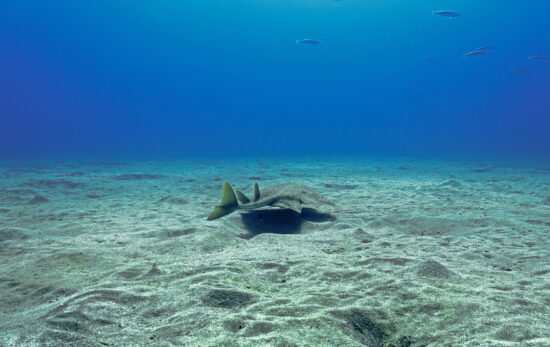Unlocking the ability to identify various fish species is like gaining access to a hidden treasure trove in the vast expanse of the ocean. As a diver, the ability to identify fish species offers a multitude of benefits that go beyond the mere satisfaction of knowing their names. By understanding and appreciating the diversity of fish species, you can transform your underwater adventures into enlightening journeys that inspire both personal growth and a commitment to protecting our blue planet.
That being said, some fish species in particular have names that might make you giggle. Whether you’ve heard of them before or not, we hope these nine funny fish names will bring a smile to your face! And yes, these are all real names that humans call these real fish.

1. Royal Gramma
Allow us to formally and officially introduce the very regal, very royal – Royal Gramma! The royal gramma (whose scientific name is: Gramma loreto) is a small tropical reef fish commonly found throughout the Caribbean Sea. Averaging slightly more than 3 inches (8 centimeters) long, what this fish lacks in size, it makes up for in appearance.
The royal gramma gets its name from the bright ‘royal purple’ color that covers the front half of its body. The other half of its body, including the tail, is a golden yellow color. This species can also be identified by the black spot on the front of its dorsal fin. There’s also a black line that streaks through its eyes (like fancy makeup fit for a queen). And if the name royal gramma doesn’t make you crack a smile, this unique little fish has not one but two funny common names, the other of which is fairy basslet.

2. Sarcastic Fringehead
While it may sound like the sarcastic fringehead is some sort of comedian with a funny hairdo, it is in fact a small brown fish that lives in coastal waters from San Francisco to Baja California. This fascinating fish (whose scientific name is Neoclinus blanchardi) is best known for the incredible display made by two combatting males. Although usually less than 10 inches (25 centimeters) long, sarcastic fringeheads are fearless, aggressive, and extremely territorial. They’ve even been known to charge at divers that get too close to their burrow.
The fringehead part of their name comes from the feather-like appendages over their eyes. The sarcastic part of their common name is attributed to their temperament. It’s important to note that while in today’s modern world, we typically think of the word sarcastic as meaning ironic or funny, the origin of the word sarcasm actually originates from the Greek word sarkasmós meaning ‘to tear flesh or bite the lip in rage’. Male sarcastic fringeheads wrestle by pressing their shockingly large open mouths against each other, as if they are aggressively kissing. Check it out in this BBC Earth YouTube video – your mouth might open as wide as the sarcastic fringeheads!
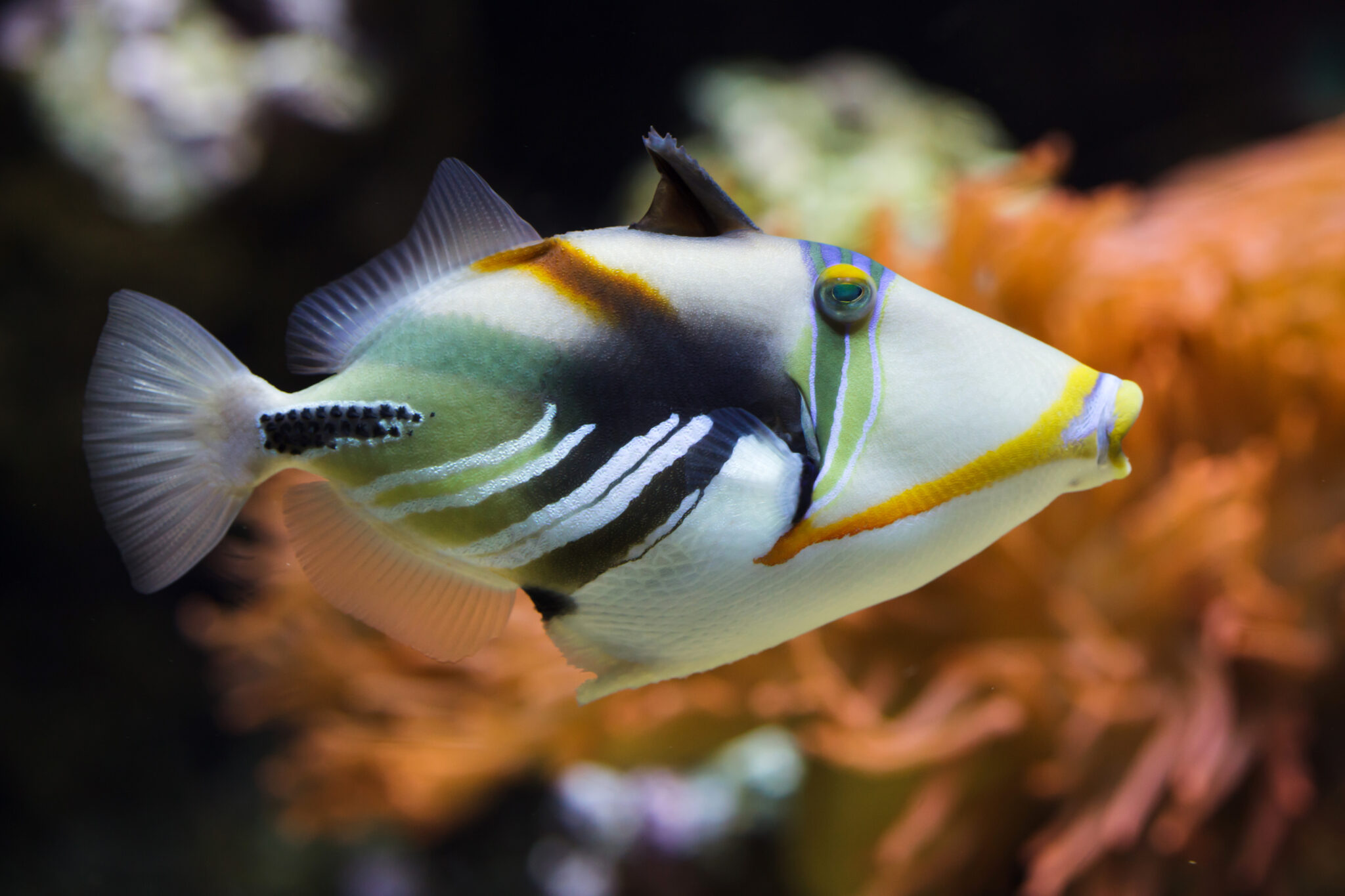
3. Humuhumunukunukuapua’a
This fish name makes the list simply because it’s so fun to say! Humuhumunukunukuapua’a is actually the Hawaiian name for triggerfish, and it is one of the longest words in the Hawaiian language. Translation of the name to English defines the animal as ‘the fish with the pig-nosed face’. Once you learn to pronounce it correctly, it will put a smile on your face almost every time you say it. Here’s how to pronounce it: who-moo-who-moo-noo-koo-noo-koo-ah-pooah-ah. Try to say it ten times fast and you’ll really start to grin!
As the Hawaiian state fish, the humuhumunukunukuapua’a is commonly spotted swimming around tropical coral reefs surrounding the Hawaiian Islands. Their beautifully bright colors, geometric markings, and dorsal spine ‘trigger’ make them pretty easy to identify amongst the other reef fish. Humuhumunukunukuapua’a typically reach a maximum length of about 12 inches (30 centimeters).
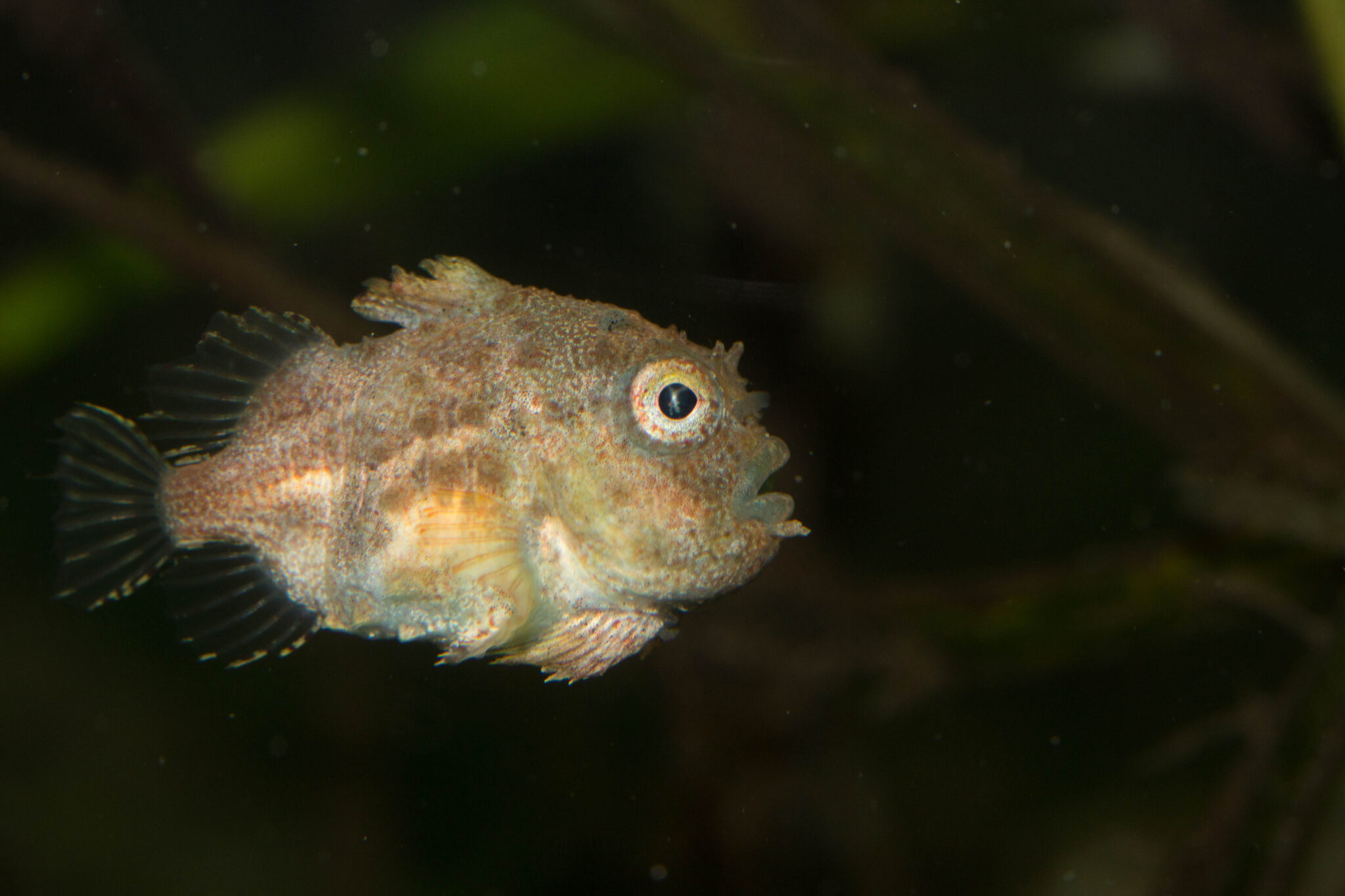
4. Lumpsucker
Somehow the cuteness of the lumpsucker fish seems to outweigh the grossness of its name – and will most likely make you chuckle. The lumpsucker is a chubby, almost spherical fish with adhesive discs on their underside. Thus, the lump part of their name refers to their round shape, and the sucker part of their name refers to their ability to suction to rocks or kelp. Literally, they are lumps with suckers.
Lumpsuckers belong to the scientific family Cyclopteridae, which is made up of nearly 30 different species including the smooth lumpsuckers and the spiny lumpsuckers. What wonderful additions to this already wonderful name! The different lumpsucker species range in size from just 1 inch (2.5 centimeters) long to nearly 22 inches (55 centimeters) long. While they are most common in the North Pacific, divers can also spot lumpsuckers in the cold waters of the North Atlantic and Arctic.
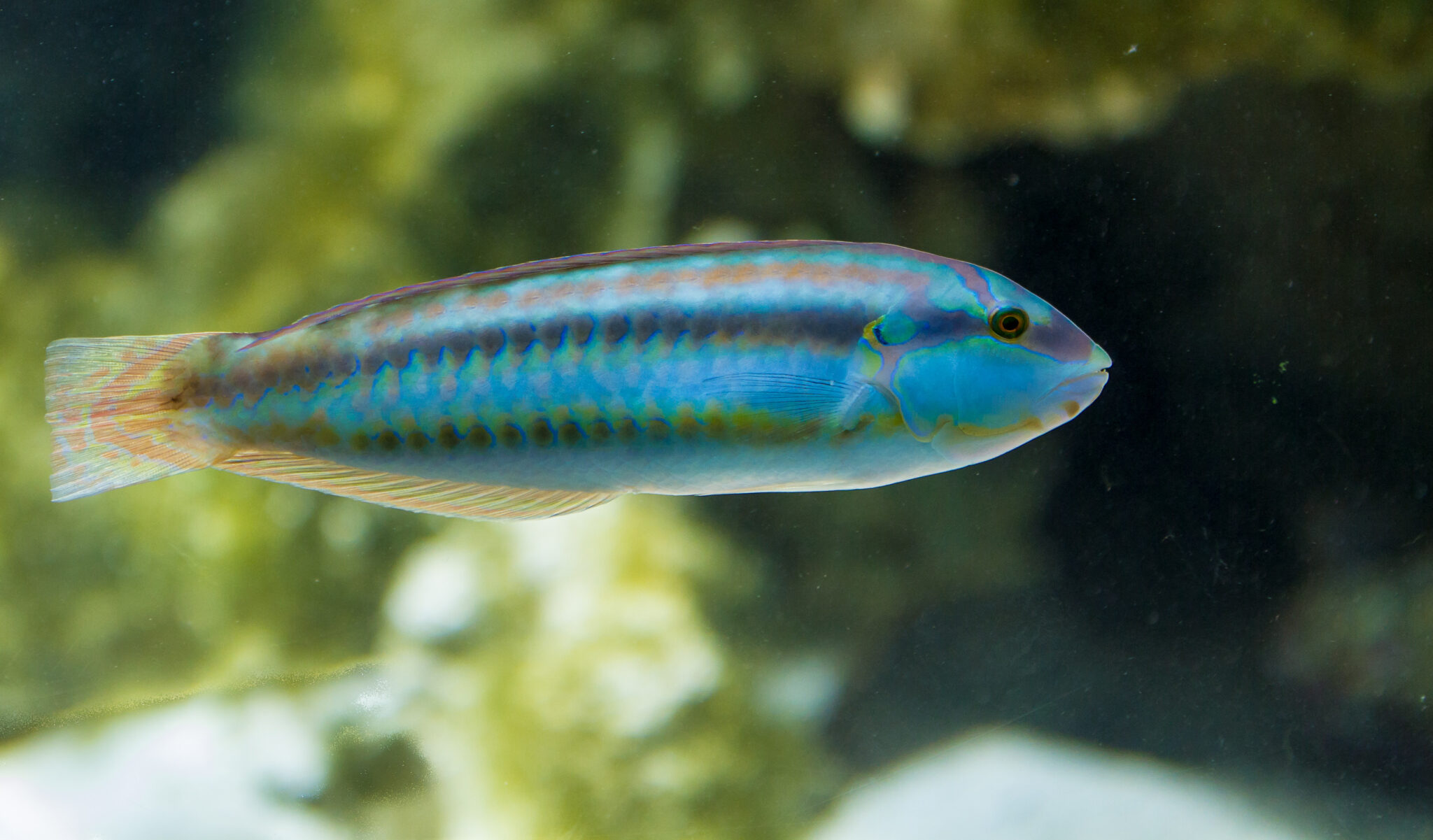
5. Slippery Dick
It almost goes without saying why this name is included in the list of funny fish names. All giggling aside, the slippery dick (whose scientific name is Halichoeres bivittatus) is a species of wrasse native to the tropical waters of the western Atlantic Ocean and Caribbean Sea. The slippery dick fish has an elongated, laterally compressed body with a pointed snout. It has a vibrant coloration, typically ranging from a bluish-gray to greenish-brown on the upper body, and a lighter shade on the belly. It also has two distinctive black stripes that run from the snout through the eye to the caudal fin.
Slippery dicks are commonly seen darting around shallow reef habitats. From juvenile to adult, these wrasses dramatically alter their color, so individuals can differ greatly in coloration and markings, depending on their age. These beautiful little fish typically grow to a length of about 14 inches (35 centimeters).
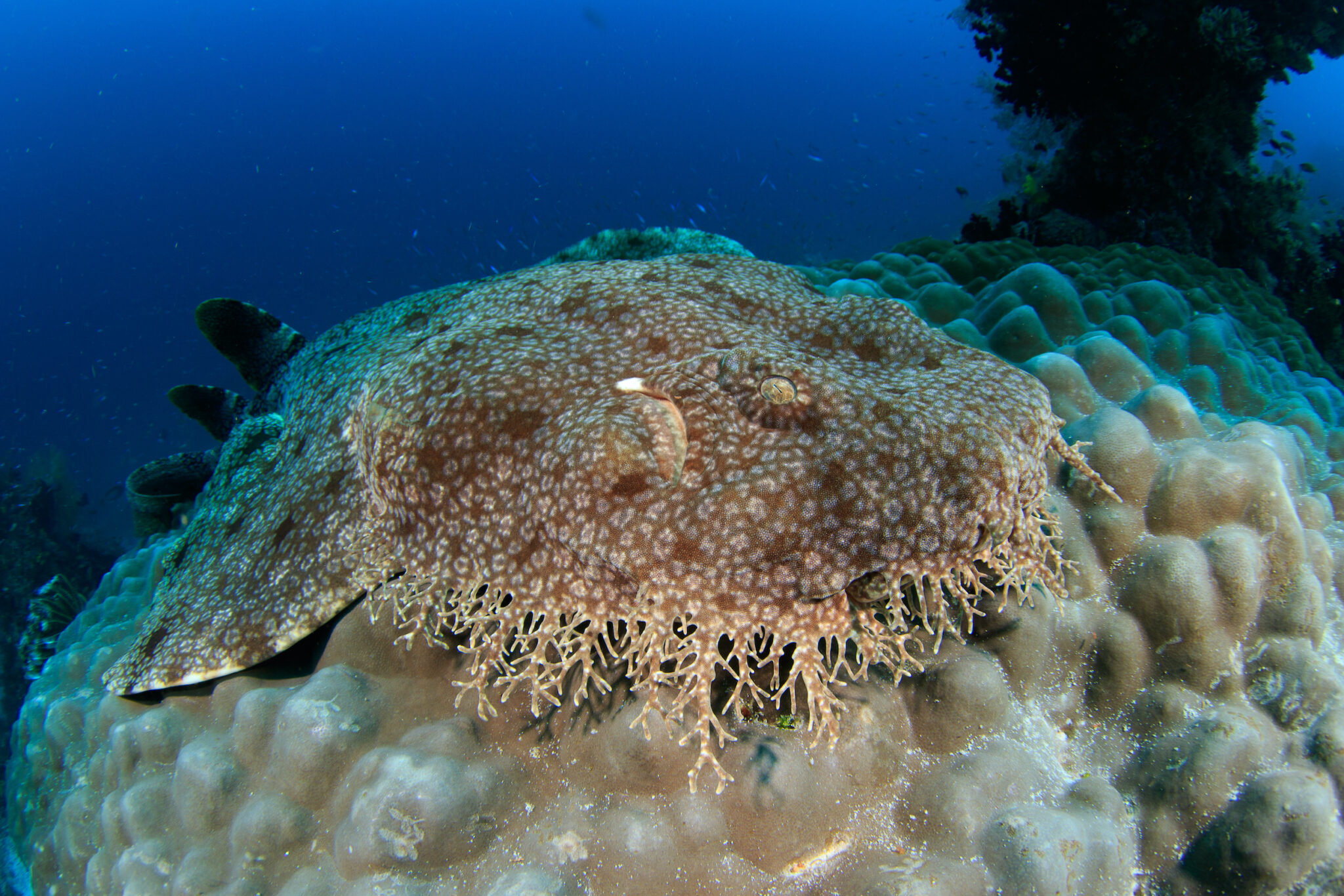
6. Tasselled Wobbegong
The oddly named tasselled wobbegong (whose scientific name is Eucrossorhinus dasypogon) is a species of carpet shark found in the western Pacific, including parts of Indonesia, New Guinea, and Australia. The tasselled part of the name refers to the branching fringe that surrounds the shark’s head – some even refer to this as their ‘beard’. The wobbegong part of their name is actually an Australian Aboriginal word that has been speculated to mean ‘living rock’.
Like an actual carpet, this intricately patterned flat shark lays motionless on the bottom, complete with tasselled fringe, waiting for unsuspecting prey to swim a bit too close. Wobbegongs are certainly not the largest sharks in the ocean. They reach a maximum length of approximately 4 feet (122 centimeters). However, this shark can surely make up for size with it’s incredible appearance and funny name. While some members of this population are threatened by fisheries and habitat degradation, fortunately the Great Barrier Reef Marine Park protects some of the tasselled wobbegong’s habitat.

7. Bumphead Parrotfish
Is it obvious how the bumphead parrotfish got its name? The bumphead parrotfish (Bolbometopon muricatum) commands attention with its robust build, growing up to four feet (1.2m) long and weighing over 100 pounds (45kg). The species can be found in the Indo-Pacific, showing off their vibrant mix of blue, green, and yellow hues. The bumphead parrotfish stands out amidst the colorful coral tapestry that serves as its habitat.
What truly sets this fish apart is its prominent forehead bump, giving it an almost prehistoric appearance. This specialized structure, known as the “bumphead,” is made of dense bone. This is used by the fish to effortlessly crunch through the tough exoskeletons of coral. However, the bumphead parrotfish’s fascinating role extends far beyond its appearance. It plays a crucial ecological role as nature’s reef sculptor. As it voraciously feeds on algae and coral, it inadvertently helps maintain a healthy balance within the reef ecosystem.
8. Monkeyface Prickleback
The monkeyface prickleback, also known as the monkeyface eel, is a peculiar resident of the Pacific coast of North America. It bears a name that immediately sparks curiosity. But how did this fish acquire such an intriguing and whimsical name? The answer lies in its unmistakable facial features. As its name suggests, the monkeyface prickleback (Cebidichthys violaceus) possesses a countenance that bears a remarkable resemblance to that of a mischievous monkey. Beneath its charming and comical appearance lie several intriguing facts that make it a truly remarkable species.
One of the most astonishing aspects of the monkeyface prickleback is its longevity. These fish have an incredibly long lifespan, with some individuals reported to live up to 50 years or more. This exceptional lifespan sets them apart from many other fish species and underscores their ability to adapt and thrive in their rocky, intertidal habitat.
The species boasts a diverse diet that includes a variety of marine invertebrates, such as mollusks, crustaceans, and even other small fish. Its specialized teeth and powerful jaws allow it to crack open the shells of its prey, showcasing its adaptability as a predator. But what truly sets the monkeyface prickleback apart is its intriguing ability to change its sex. These fish are sequential hermaphrodites, starting their lives as females and transitioning into males as they grow larger and older. This unique reproductive strategy helps maintain a balanced population structure within their habitat.

9. Red-Lipped Batfish
The red-lipped batfish, a peculiar resident of the Galapagos Islands, boasts a name that perfectly encapsulates its distinctive feature. True to its name, this fish has bright red, pouty lips that really seem to resemble the application of lipstick. These unique lips serve a purpose beyond aesthetics. The hue is believed to play a role in communication and courtship rituals. It is thought that red-lipped batfish may use their lips to signal their availability for mating. This vibrant display attracts potential partners with their striking appearance. The intense red coloration also helps in-species recognition and may serve as a deterrent to rivals during territorial disputes.
One of the most intriguing facts about the red-lipped batfish is its unusual mode of movement. While most fish gracefully swim through the water, the red-lipped batfish prefers to “walk” on the ocean floor. Using its modified pectoral fins, it shuffles along, resembling a peculiar underwater dance. This unique adaptation allows the fish to navigate sandy and rocky habitats with ease, showcasing its remarkable ability to adapt to its environment.
10. Whitemargin Stargazer
The Whitemargin Stargazer (Uranoscopus sulphureus) has a name that revels in both wonder and humor. Usually found in the Indo-Pacific region, including the Red Sea and the Great Barrier Reef, this fish is known for its funny upward-facing eyes and mouth. The result? A comical surprised expression.
The Whitemargin Stargazer buries itself in the sandy ocean floor, with only its eyes and mouth visible, lying in wait for prey to swim by. It then uses a quick, upward lunge to capture its next meal. Additionally, Stargazers are equipped with electrical organs behind their eyes, capable of delivering a shock to deter predators or stun prey! Their name comes from their odd habit of “stargazing” as they look upward from their sandy burrows.
11. Boops Boops
Also known as the Bogue, the Boops Boops has a name that sounds like a silly sound effect, but it’s a real fish found in the eastern Atlantic Ocean and the Mediterranean Sea. This small fish has a slender, silver body with a yellow stripe across its side.
Boops Boops are often found in large schools. Additionally, they are omnivorous, feeding on a variety of plankton, algae, and small invertebrates. Despite their comical name, they serve as prey for larger fish and marine animals, playing a crucial role in the marine ecosystem.
Fish Lovers
If you love all the fish, including the ones with funny names, and want to help safeguard marine life populations and their habitats – join our global community of Torchbearers working together to seek adventure and save the ocean.
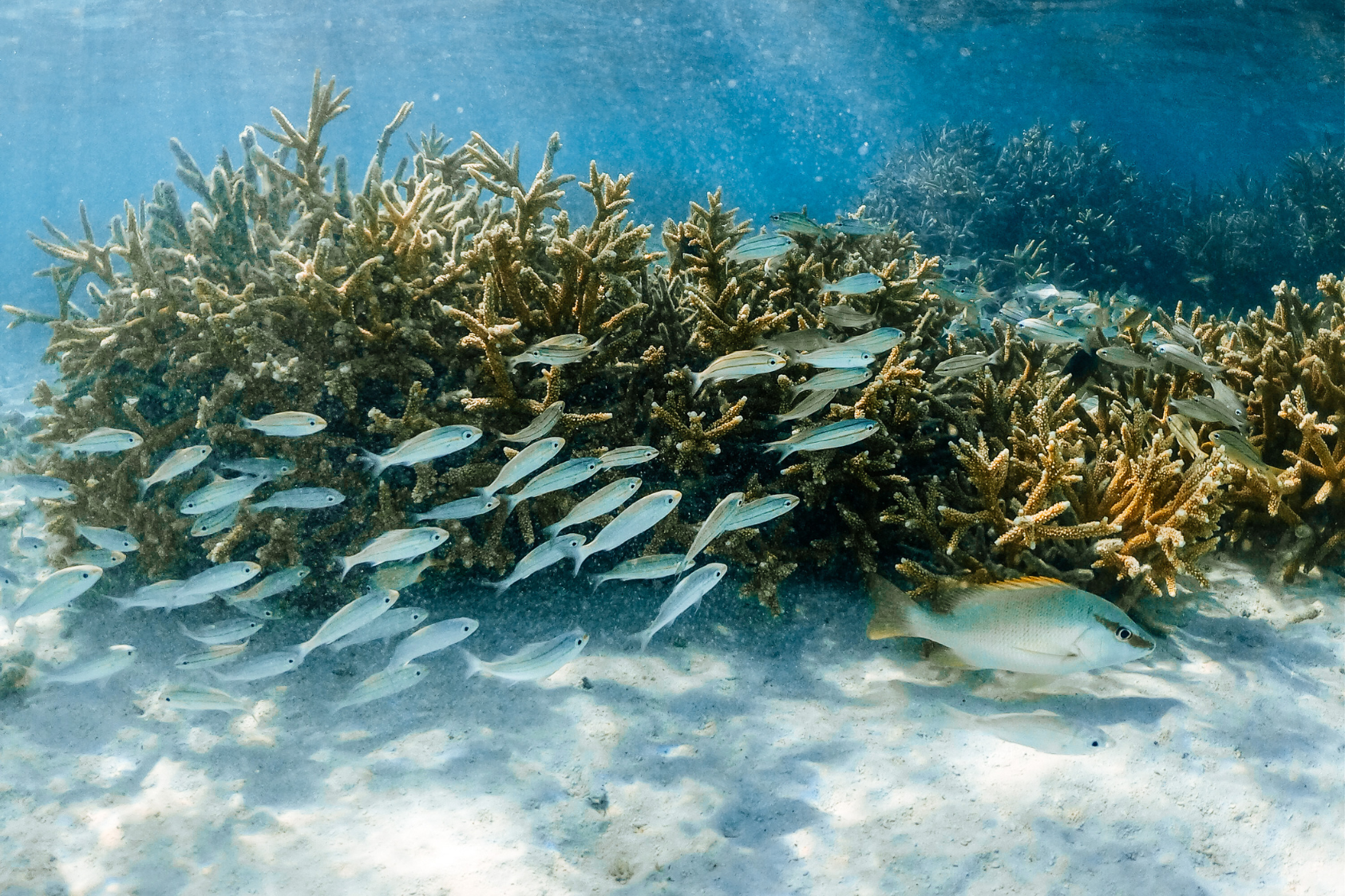
Interested in learning more funny fish names? Ask your local dive shop about the PADI Fish Identification Specialty Course and the PADI Underwater Naturalist Speciality Course. These two courses will increase your ability to identify unique fish species as well as how to spot them as you explore the marine environment. Whether you’re just starting or continuing your diving journey, PADI eLearning is a great way to jumpstart your next underwater adventure. Every course provides new opportunities to observe incredible fish – including the ones with funny names!
For more fun information about extraordinary ocean animals, check out some of our other blog articles here:


